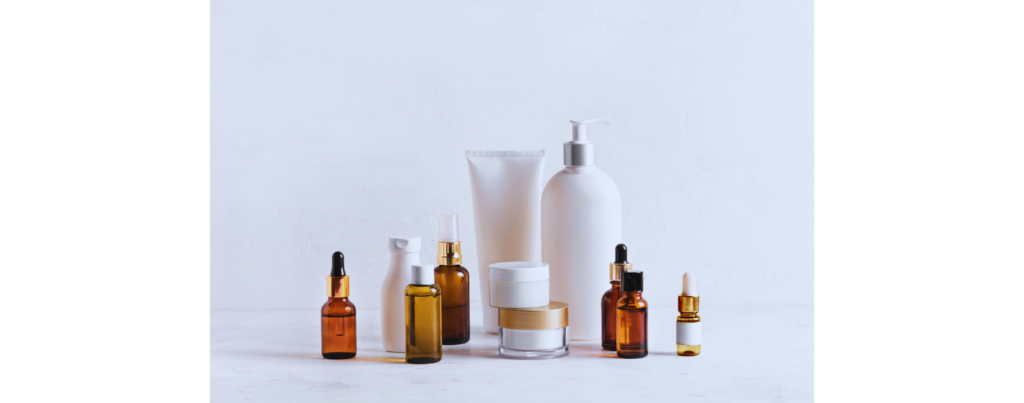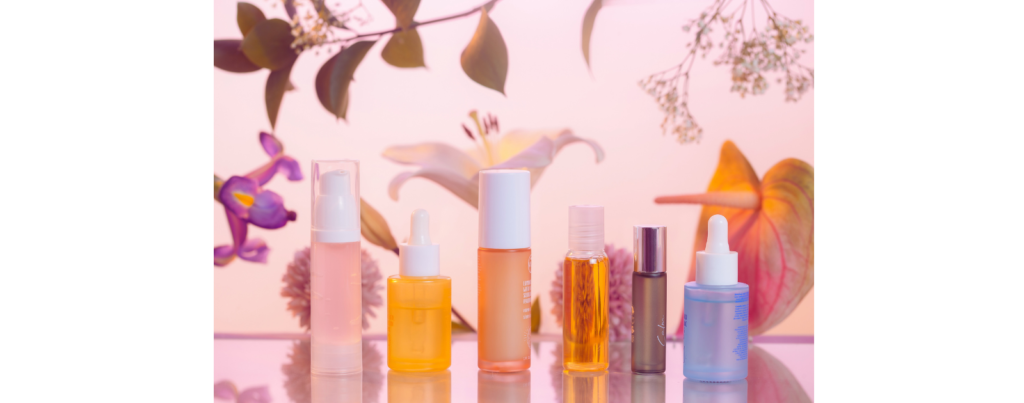Niacinamide, also known as vitamin B3, is a powerhouse ingredient in the world of skincare. It offers a multitude of benefits, including reducing inflammation, improving skin elasticity, and enhancing the skin’s barrier function. This versatile ingredient can be found in various forms, such as serums, creams, and cleansers, making it easy to incorporate into your daily regimen. Integrating niacinamide into your skin care routine can significantly enhance the effectiveness of your overall skincare practices, addressing various skin concerns and promoting a healthier complexion.
Introduction
If there’s one skincare ingredient making waves for all the right reasons, it’s niacinamide. Often called a “jack-of-all-trades” in the beauty world, this form of Vitamin B3 works wonders for all skin types and tackles a variety of concerns. Whether you’re struggling with acne, fine lines, or dullness, niacinamide might just become your new favorite ingredient. In this guide, we’ll break down everything you need to know about niacinamide, its benefits, and how to use it effectively in your skincare routine.
What is Niacinamide?

Niacinamide, also known as nicotinamide, is a water-soluble form of Vitamin B3. It’s derived from an amino acid called tryptophan and plays a vital role in maintaining healthy skin. Unlike some skincare ingredients that can be harsh or drying, niacinamide is gentle and versatile, making it a great option for even the most sensitive skin types. It can be applied topically in the form of serums or creams, or taken orally as a dietary supplement to support overall skin health.
Key Benefits of Niacinamide for Skin
Niacinamide is a multi-tasking ingredient that offers a wide range of benefits:
- Hydrated Skin: By strengthening the skin’s moisture barrier, niacinamide helps prevent water loss, keeping your skin hydrated and plump.
- Brightens Skin: It works to fade dark spots and hyperpigmentation, promoting a more even skin tone and radiant complexion.
- Treats Acne: Niacinamide’s anti-inflammatory properties reduce redness and irritation associated with acne while also preventing clogged pores.
- Minimizes Signs of Aging: It stimulates collagen production, helping to reduce the appearance of fine lines and wrinkles.
- Improves Skin Texture: By smoothing the skin’s surface and reducing enlarged pores, niacinamide enhances overall skin texture.
- Protects Against Environmental Damage: Strengthening the skin barrier helps shield your skin from pollutants and other environmental stressors.
How Niacinamide Works

Niacinamide works at a cellular level to improve skin health. Topical niacinamide is an effective ingredient for reducing the appearance of dark spots on the skin, supported by studies demonstrating its lightening properties when used consistently over time. It enhances the production of ceramides, which are essential lipids that maintain the skin’s protective barrier. By regulating oil production and calming inflammation, niacinamide addresses multiple skin concerns simultaneously. Its compatibility with other popular skincare ingredients, such as hyaluronic acid, Vitamin C, and glycolic acid, makes it an excellent addition to any routine. Whether you’re targeting dryness, sensitivity, or aging, niacinamide delivers noticeable results.
Niacinamide and Skin Types: Benefits for Sensitive Skin
One of the standout qualities of niacinamide is its suitability for all skin types. Here’s how it benefits each:
- Sensitive Skin: Its soothing properties help reduce redness, irritation, and inflammation without causing additional sensitivity.
- Dry Skin: Niacinamide boosts hydration by strengthening the skin’s lipid barrier, locking in moisture for longer.
- Oily Skin: By regulating sebum production, niacinamide minimizes shine and prevents clogged pores, making it ideal for oily or acne-prone skin.
- Combination Skin: It addresses diverse concerns, balancing oiliness in some areas while hydrating drier patches.
Niacinamide for Uneven Skin Tone and Hydration
Niacinamide is a powerhouse ingredient that excels in addressing uneven skin tone and boosting hydration. By fortifying the skin’s barrier function, niacinamide helps to diminish the appearance of fine lines and wrinkles while enhancing overall skin radiance. One of its standout features is its ability to increase the production of ceramides, essential lipids that lock in moisture, making it a fantastic choice for those with dry skin.
When paired with hyaluronic acid, niacinamide delivers an intense hydration boost, leaving your skin feeling soft, smooth, and supple. This dynamic duo works wonders for replenishing the skin’s natural moisture barrier, ensuring long-lasting hydration.
In terms of evening out skin tone, niacinamide is highly effective in reducing hyperpigmentation and dark spots. It achieves this by inhibiting the transfer of melanin, the pigment responsible for skin color, from melanocytes to surrounding skin cells. The result is a more even-toned and radiant complexion.
Incorporating niacinamide into your skincare routine can lead to significant improvements in skin texture, tone, and overall health. Whether you’re dealing with dry skin, uneven skin tone, or other skin concerns, niacinamide is a versatile ingredient that can help you achieve a healthier, more radiant complexion.
Popular Niacinamide Products: Choosing the Right Niacinamide Serum

Ready to incorporate niacinamide into your skincare routine? Here are some great product options:
- Niacinamide Serums: Lightweight and fast-absorbing, serums are ideal for delivering a concentrated dose of niacinamide to targeted areas.
- Moisturizers with Niacinamide: These combine hydration with the benefits of Vitamin B3, making them a convenient option for daily use.
- Niacinamide Supplements: Taken orally, these can support skin health from the inside out. However, it’s important to consult a healthcare provider before starting any supplement.
Look for products with concentrations between 2% and 10% for effective results without irritation.
How to Incorporate Niacinamide in Your Skincare Routine
Incorporating niacinamide is simple and highly effective when done correctly:
- Patch Test First: Before introducing a new product, test it on a small area of your skin to check for any adverse reactions.
- Layering: Apply niacinamide serum after cleansing and toning but before moisturizing. If using multiple serums, layer niacinamide after lightweight ones like hyaluronic acid.
- Pairing: Niacinamide works well with most active ingredients, enhancing their benefits. Pair it with Vitamin C for brightening or hyaluronic acid for hydration.
- Consistency is Key: Use niacinamide regularly to achieve and maintain visible improvements in your skin’s appearance.
Combining Niacinamide with Other Skincare Ingredients

Niacinamide’s versatility makes it an excellent partner for a variety of other skincare ingredients, enhancing its benefits and addressing specific skin concerns. Here are some popular and effective combinations:
- Niacinamide and Hyaluronic Acid: This combination is a hydration powerhouse. Hyaluronic acid draws moisture into the skin, while niacinamide helps to lock it in by strengthening the skin’s lipid barrier. The result is intensely hydrated, plump, and supple skin.
- Niacinamide and Vitamin C: Pairing niacinamide with Vitamin C can significantly brighten the skin and reduce the appearance of hyperpigmentation. This duo works synergistically to promote a more even skin tone and radiant complexion.
- Niacinamide and Retinol: Combining niacinamide with retinol can help stimulate collagen production, reducing the appearance of fine lines and wrinkles. Niacinamide also helps to mitigate the irritation that retinol can sometimes cause, making this a powerful anti-aging combination.
- Niacinamide and Folic Acid: This combination is particularly beneficial for treating acne and reducing inflammation. Folic acid helps to soothe and repair the skin, while niacinamide improves skin texture and tone, making it a great option for those dealing with acne-prone skin.
When incorporating niacinamide with other active ingredients, it’s essential to follow a few guidelines:
- Start with a low concentration of niacinamide (around 5%) and gradually increase as your skin builds tolerance.
- Be cautious when combining niacinamide with other potent actives to avoid potential irritation.
- Always perform a patch test with new products to ensure your skin doesn’t react adversely.
By thoughtfully combining niacinamide with other skincare ingredients, you can create a customized routine that effectively addresses your unique skin concerns and enhances your skin’s overall health and appearance.
6 Benefits of Niacinamide Backed by Science: Strengthening the Skin Barrier

- Boosts Skin Hydration: Strengthens the moisture barrier to prevent water loss.
- Brightens Uneven Skin Tone: Reduces the appearance of dark spots and hyperpigmentation.
- Reduces Fine Lines and Wrinkles: Supports collagen production for smoother skin.
- Treats Acne and Post-Acne Marks: Calms inflammation and fades scars.
- Strengthens the Skin’s Barrier: Protects against environmental stressors and reduces sensitivity.
- Improves Skin Texture: Minimizes pores and smooths the skin’s surface.
Potential Side Effects and Precautions

Niacinamide is generally well-tolerated by most people, but some may experience mild irritation or redness when using high concentrations. Always start with a lower percentage and gradually increase as your skin adjusts. For those considering niacinamide supplements, consult a healthcare provider to ensure safe usage and avoid excessive niacin intake.
Niacinamide in Cosmetic Dermatology
Dermatologists often recommend niacinamide for its versatility and effectiveness. It’s widely used to address:
- Fine lines and wrinkles.
- Enlarged pores and uneven skin texture.
- Dark spots and hyperpigmentation.
- Inflammatory conditions like rosacea and eczema.
With regular use, niacinamide can deliver noticeable improvements in overall skin health and appearance, making it a go-to ingredient in cosmetic dermatology.
Skincare Tips for Optimizing Results

To get the most out of niacinamide, follow these tips:
- Exfoliate Regularly: Gentle exfoliation with glycolic acid or similar ingredients helps remove dead skin cells, allowing niacinamide to penetrate deeper.
- Stay Consistent: Use niacinamide daily as part of your routine for cumulative benefits.
- Combine with a Healthy Diet: Support your skin from within by eating foods rich in Vitamin B and folic acid.
- Protect Your Skin: Always use sunscreen during the day, as niacinamide boosts the effectiveness of your SPF in protecting against environmental damage.
Conclusion
Niacinamide is a skincare superstar that lives up to the hype. From hydrating and brightening to tackling acne and fine lines, it’s a versatile ingredient suitable for all skin types. Adding niacinamide to your routine is an easy and effective way to achieve smoother, healthier, and more radiant skin. Start small, stay consistent, and enjoy the transformation as your skin begins to glow!
FAQs About Niacinamide
Q: Can niacinamide be used daily?
A: Absolutely! Niacinamide is gentle enough for everyday use and works best with consistent application.
Q: Can I use niacinamide with Vitamin C?
A: Yes, they work wonderfully together. Niacinamide enhances Vitamin C’s brightening effects and helps improve skin tone.
Q: How long does it take to see results?
A: You may notice improvements in hydration and texture within 2-4 weeks. For dark spots and wrinkles, expect visible changes in 8-12 weeks.
Q: Is niacinamide suitable for oily skin?
A: Definitely! Niacinamide regulates oil production, minimizes pores, and keeps oily skin balanced.
Q: What should I do if I experience irritation?
A: If you experience irritation, stop using the product and try a lower concentration. If symptoms persist, consult a dermatologist for advice.





